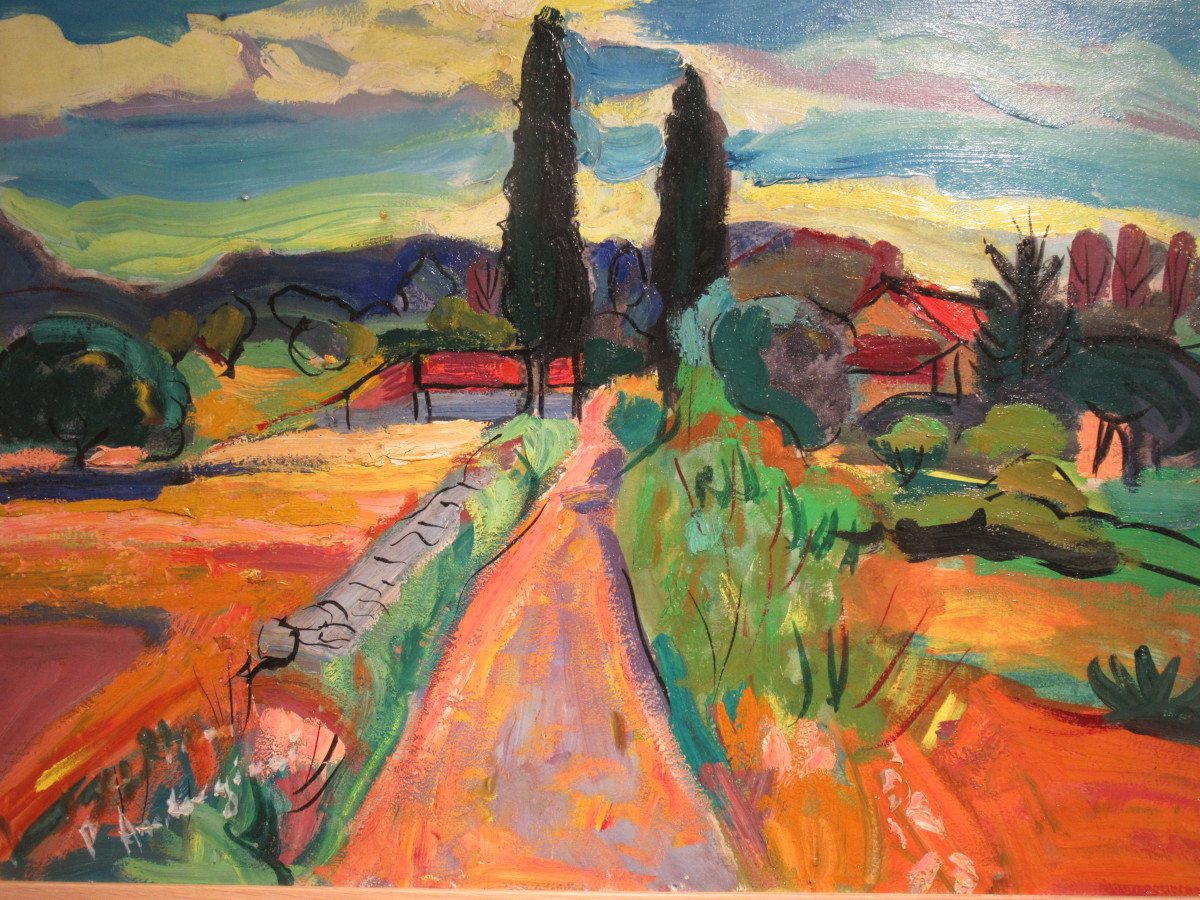Last Updated on June 5, 2024 by Marian Jones
This post explores art in Marseille, taking you first to two art galleries where you’ll see lots of paintings on local themes – Marseille itself, the ports, the beaches and the rural hinterland – and, in the case of the Musée des Beaux Arts – also works by some of France’s 19th century masters, along with a range of other paintings, drawings and sculptures. Then there are pointers to 4 more galleries, featuring ethnic, modern and decorative arts, plus a little on some of the most famous artists associated with Marseille: Pierre Puget, César Baldaccinni and Paul Cézanne. Lastly, a reminder that in Marseille, art often means street art!
MUSÉE DES BEAUX ARTS
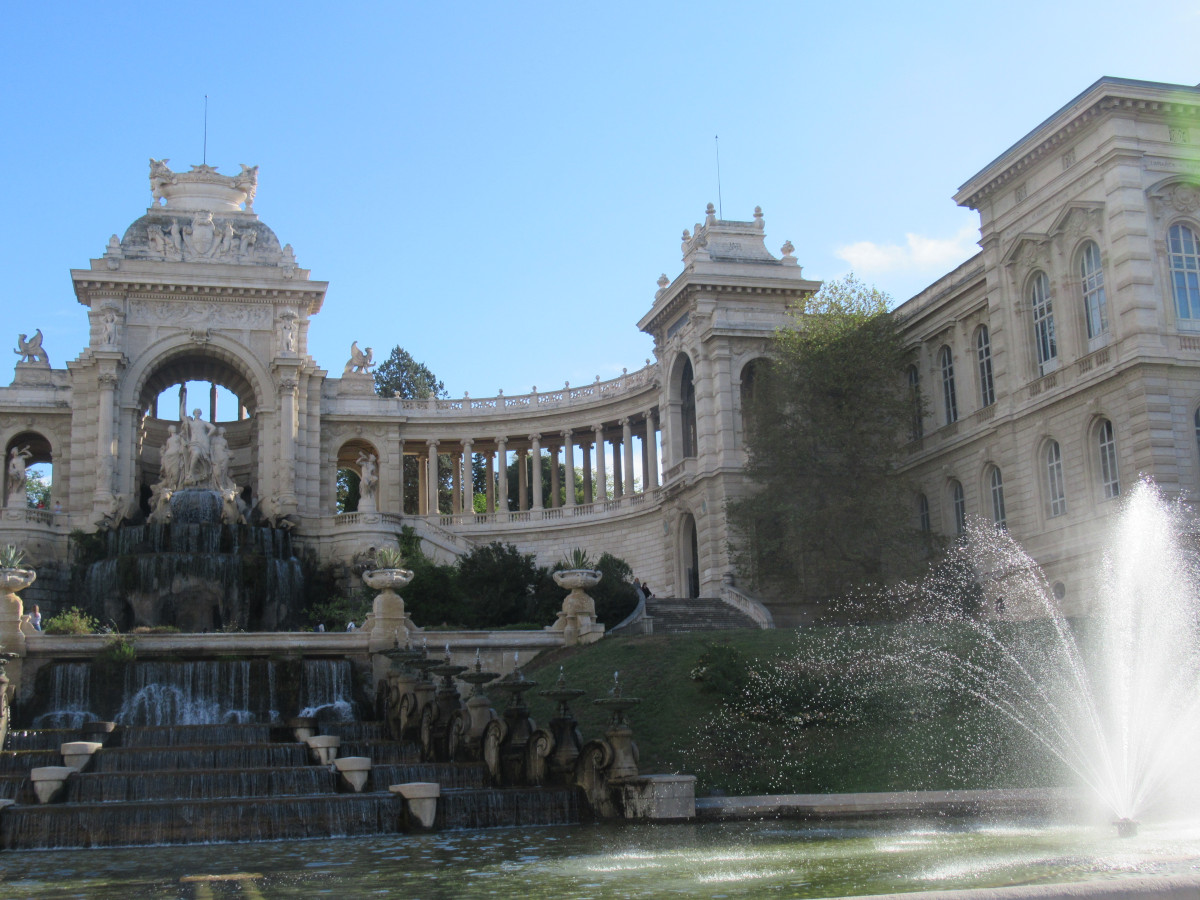
Marseille’s main Fine Arts Museum is in the stunning Palais Longchamps building, whose imposing marble frontage – steps, pillars, fountains – was designed to celebrate the completion of the Durance Canal which brought clean water to Marseille in the mid-19th century. Look out for the sculpture of a chariot pulled by Camargue bulls and don’t forget to explore the lovely park behind the museum, a popular leisure area for the locals.
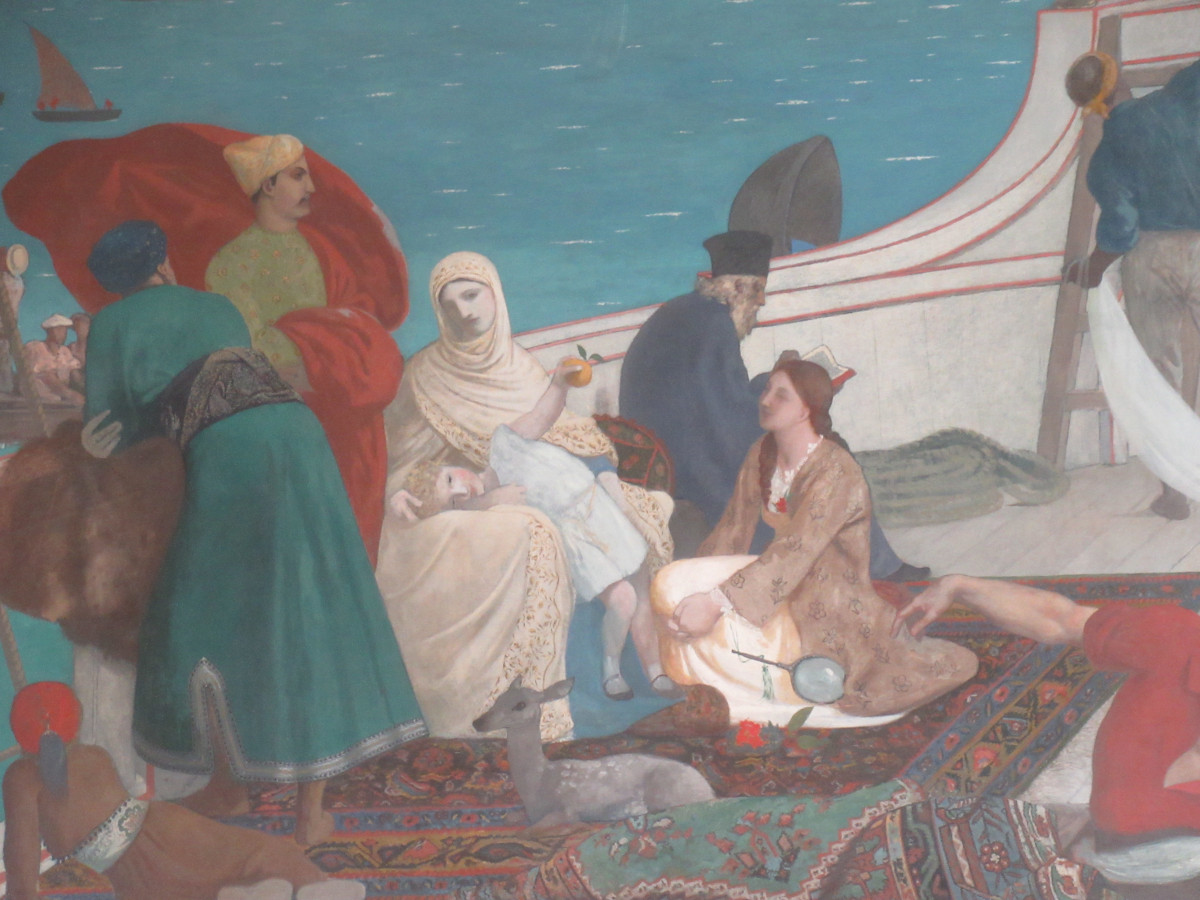

Inside, take a look at the frieze decorating the main staircase, where the history of Marseille is represented in pictures with titles like Marseille, the Greek Colony and Marseille, Gateway to the East. The main collection covers the 17th to 19th centuries, with a range of European masters, especially French and Italian artists – Courbet, Daubigny, Millet, for example. One room is dedicated to Pierre Puget (1620-1694), the local artist covered in Episode 02 who designed Marseille’s Vieille Charité building and was a renowned artist, architect and sculptor, sometimes called ‘France’s Michelangelo’. Paintings of his here include two Madonnas, The Sleeping Infant Jesus and Virgin with a Palm Tree.

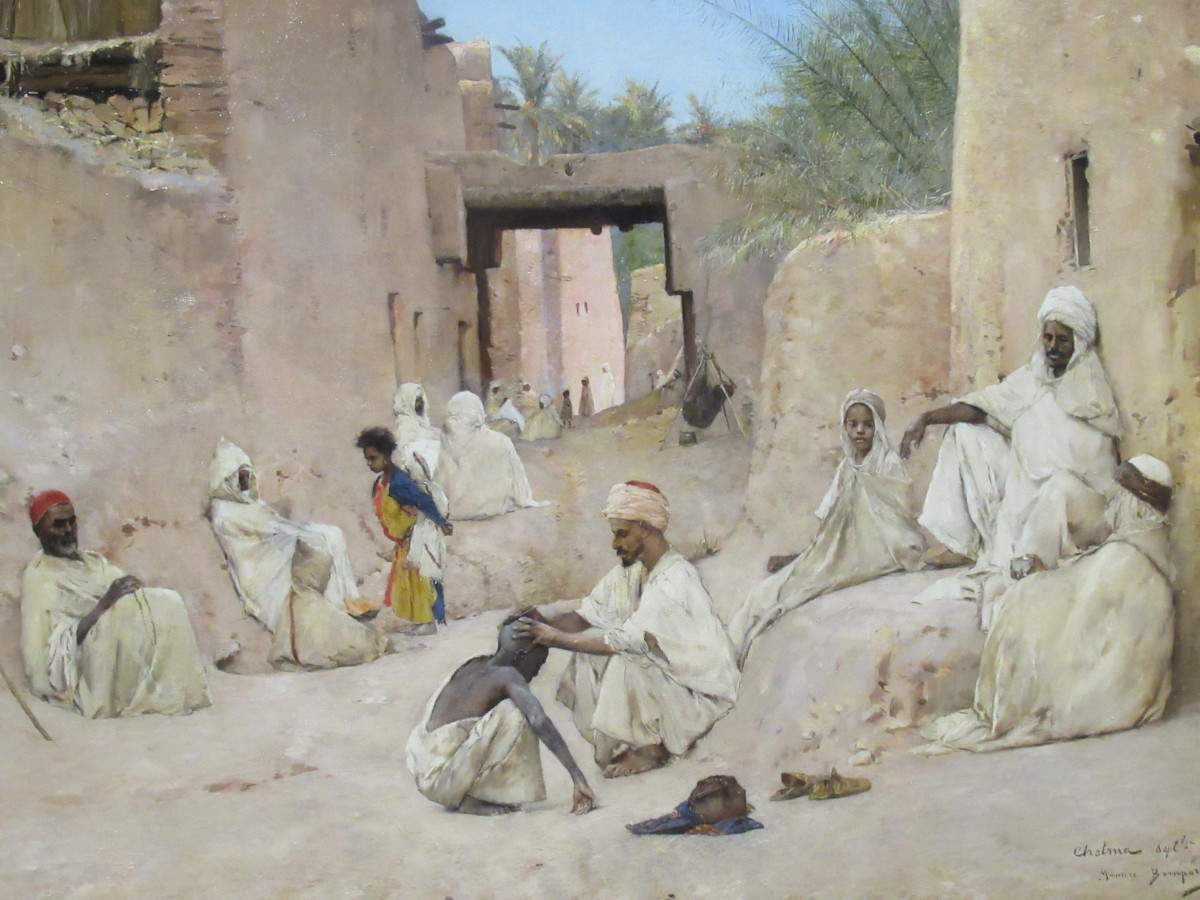
Many artists of the Marseille School are represented. Embarcation for Menorca by Jean-Joseph Kepeller (1702-90) recalls a real event, the departure from Marseille of ships commanded by the Duke of Richelieu and shows the port and the Hotel de Ville. Kepeller was a founder member of the Académie de Peinture de Marseille. You’ll see Émile Loubon’s ‘flagship of the École de Marseille’, View of Marseille, where the sea, the sky and, in the background, Marseille are bathed in provençal light. His Transhumance is here too, showing farmers taking their cattle up into the mountains in spring. Many 19th century Marseille painters travelled to North Africa, and one example of the work they produced there is Maurice Bompard’s l’Oasis de Chetma.

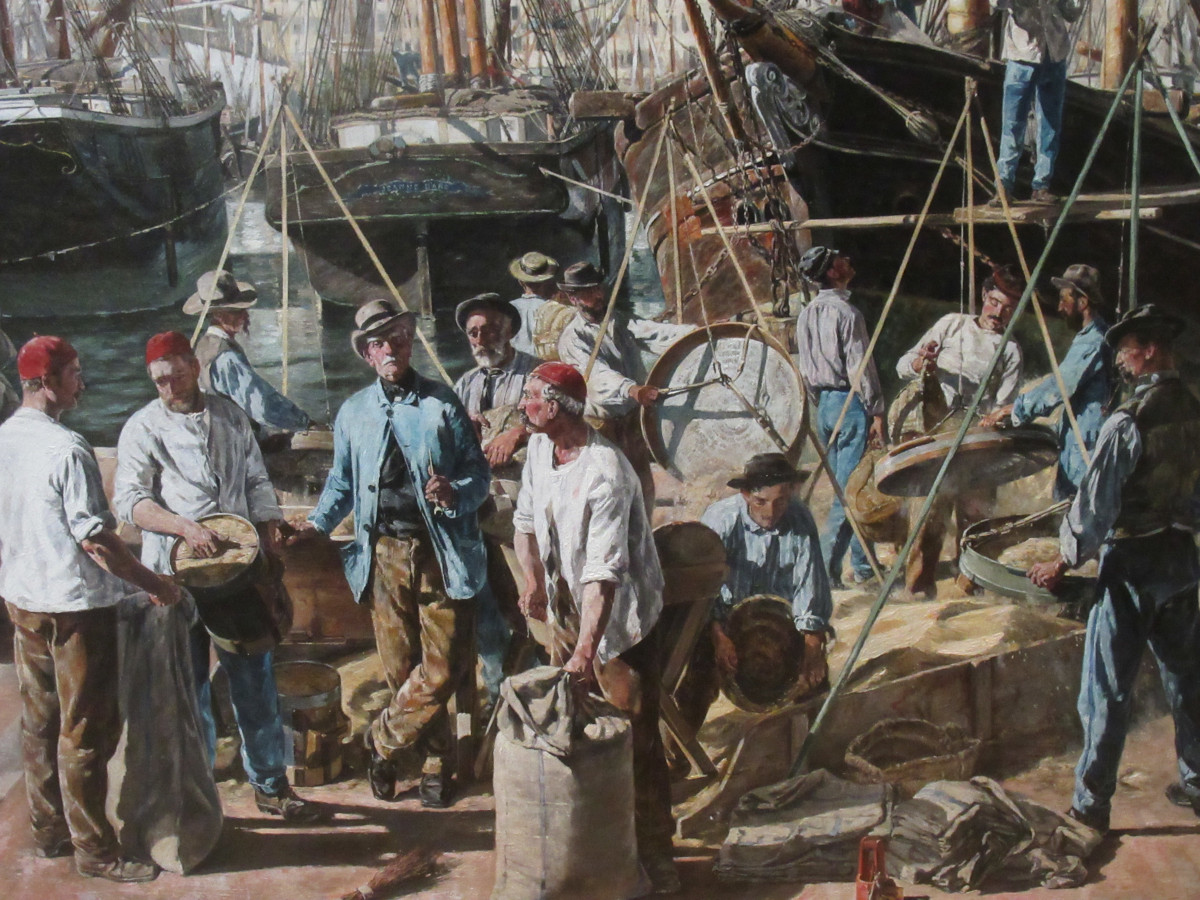
Félix Ziem (1821-1911) is represented by his Quai du Port à Marseille, full of the colour and light of the Mediterranean, showing a harbourside street and the boats moored alongside it. Alphonse Moutte studied art in Marseille and eventually became the Director of the city’s Art School. Works by him here include Le Dejeuner des Pêcheurs showing local fishermen taking a break and Le Débarquement des Blés, a busy port scene with a tangle of ships, men and goods. Works by Joseph Garibaldi (1863-1941) include Intérieur d’Atelier, a man reading by an open window, with Marseille’s port visible behind him, and two rural scenes, a little house called Le Cabanan aux Lecques and a Camargue Landscape.


Look out too for 36 busts by the newspaper satirist Honoré Daumier, born in Marseille in 1808. During his 40 year career he lampooned everyone from monarchs to his fellow countrymen and his work is a social commentary of the 19th century. When imprisoned in 1832 for satirising the king, he remarked that he would continue to draw, ‘just to annoy the government’.
REGARDS DE PROVENCE


The Regards de Provence gallery, near the Mucem and the Cosquer Museum, was opened in 2013 as part of the renewal of this district. It specialises, as its name suggests, in Provence, and displays paintings, sculptures, photographs and drawings from the 18th century to the present day. Alongside the permanent collection, there are temporary exhibitions. A visit to its café, with stunning views over La Joliette and the Fort Saint Jean is a treat.

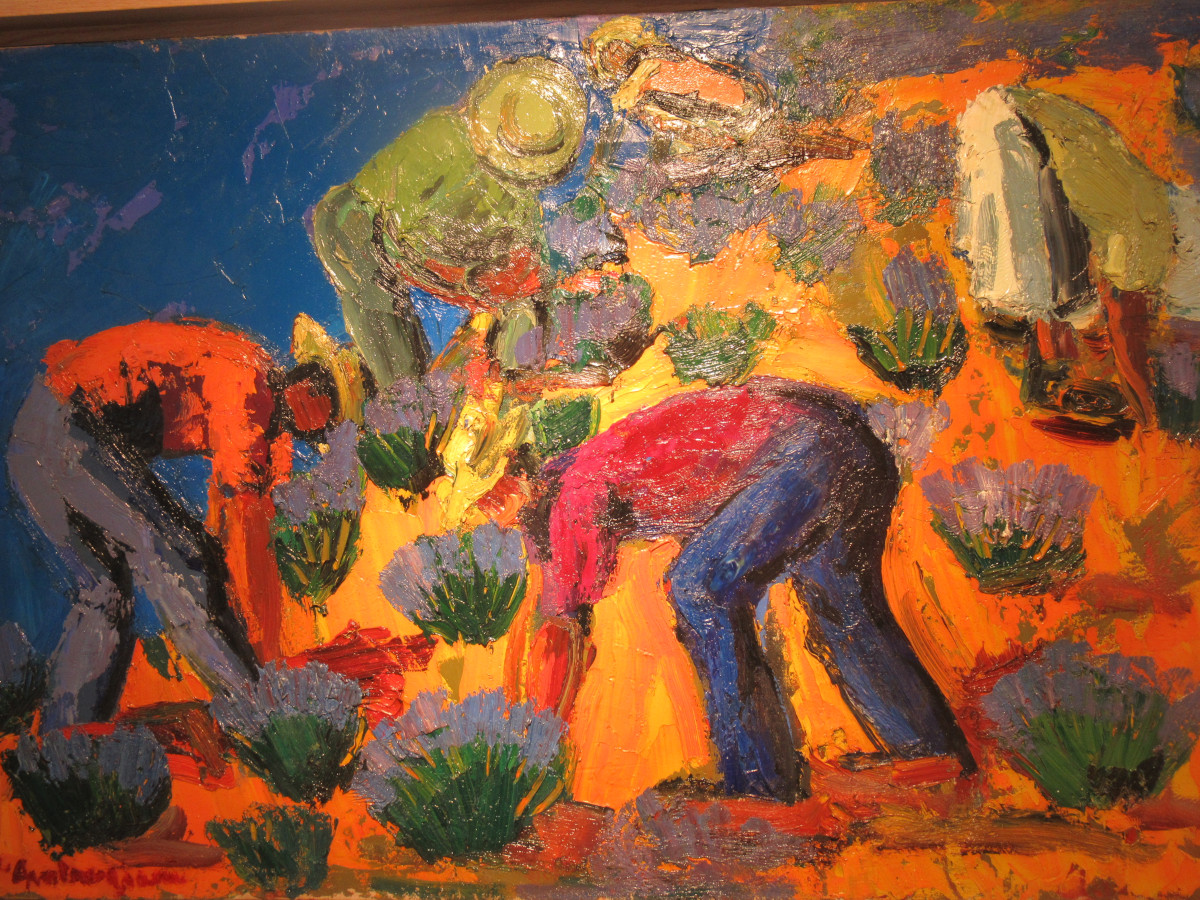
This is the place to see representations of Marseille and the provençal coast and countryside, by a range of artists including colourists, post impressionists, fauvists and expressionists. Pictures of Marseille include Henri Manguin’s Le Vieux Port – a fishing boat on a misty morning – and the contrasting Port de la Joliette by Joseph Garibaldi, where the boats sit on bright blue water. René Seyssaud’s The Red Rocks of Agay depicts a wild coastal scene in thick daubs of bright paint – blue sea, yellow sand, red rocks – and two paintings by Pierre Ambrogiani show hot, hazy rural scenes in bright colours: The Lavender Pickers and Road to the Farmhouse, both painted in vibrant shades of red, orange and yellow.
4 more Marseille art galleries


The Vieille Charité is a stunning 17th century building – see Episode 04 for its story. Today it houses a range of cultural centres, including two art museums. The Museum of African, Oceanian and Amerindian Arts on the second floor is one of only two ‘ethnic’ museums in France – the other is in Paris. It has a large collection of African art – masks, statues, sculptures and paintings – as well as some 3000 pieces from the American subcontinent, including skulls, dance masks, and American Indian feathered ornaments. The Museum of Mediterranean Archaeology has collections of art and artefacts from several ancient cultures: Egyptian, Greek and the Middle East, for example. It also displays archaeological finds from the local area.
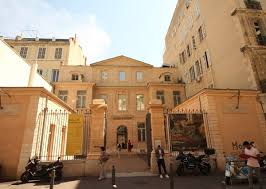
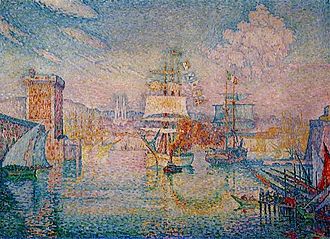
The Cantini Museum is for modern art from roughly 1900 to 1960 and includes works of fauvism and the early cubist artists. Here you can see early 20th century paintings of Provence, such as Cassis by André Derain, The Mediterranean Landscape by Achille Friesz and Dufy’s Estaque, alongside a large photographic collection. A second gallery, the Museum of Modern Art, has a collection beginning in the mid-20th century which includes paintings, sculpture, photography, video art and installations. Here, for example, is work by the New Realists, whose manifesto was published in 1960 and who used ‘modern material’ – objects from the consumer society, posters, plastic and neon lights – in their work.
At the Château Borély you’ll find the Museum of Decorative Arts, where you can experience life in 18th century Provence through various ‘stagings’ – a farmhouse dining room, a chapel and so on – and see lots of examples of decorative art and pottery from the region: porcelain, gilded and engraved tableware, collections of Chinese glasses, jade objects and snuffboxes. There is also a large fashion collection featuring clothes, accessories and perfume bottles.
A Marseille Artist
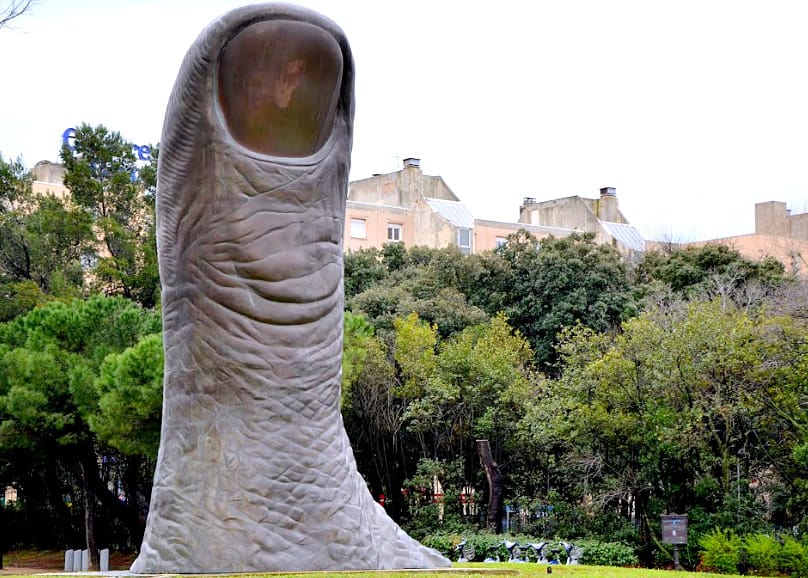

Pierre Puget is Marseille’s best-known artist – see Episode 02 – but César Baldaccini also deserves a mention. Born in 1921, he made his name through his ‘compression’ works, for example by using a a hydraulic press to make a 520 ton barrier of compressed cars shown at the Venice Biennale in 1995. Another work featured thousands of crushed counterfeit Cartier watches which had been seized by customs officials. His best-known piece is perhaps the giant thumb, versions of which can be seen in the Défense area of Paris (12m high) and just near the Museum of Modern Art in Marseille (6m). Another striking piece was his gigantic Breast, modelled on a cabaret dancer and moulded in pink polyester resin.
Some admired his work for its implied criticism of consumerism. Others not so much. The Marseille writer Jean-Claude Izzo, seeing a Baldaccini piece at the Vieille Charité, said it made him ‘want to throw up.’ He objected to ‘so much bad taste in a place with such a painful history’, ie where plague victims and generations of the destitute had been housed in former centuries. The artist also gave his name – César – to the compression-style gold statuette which is the French version of the Oscar and which he was commissioned to design in 1975.
Cézanne in Marseille
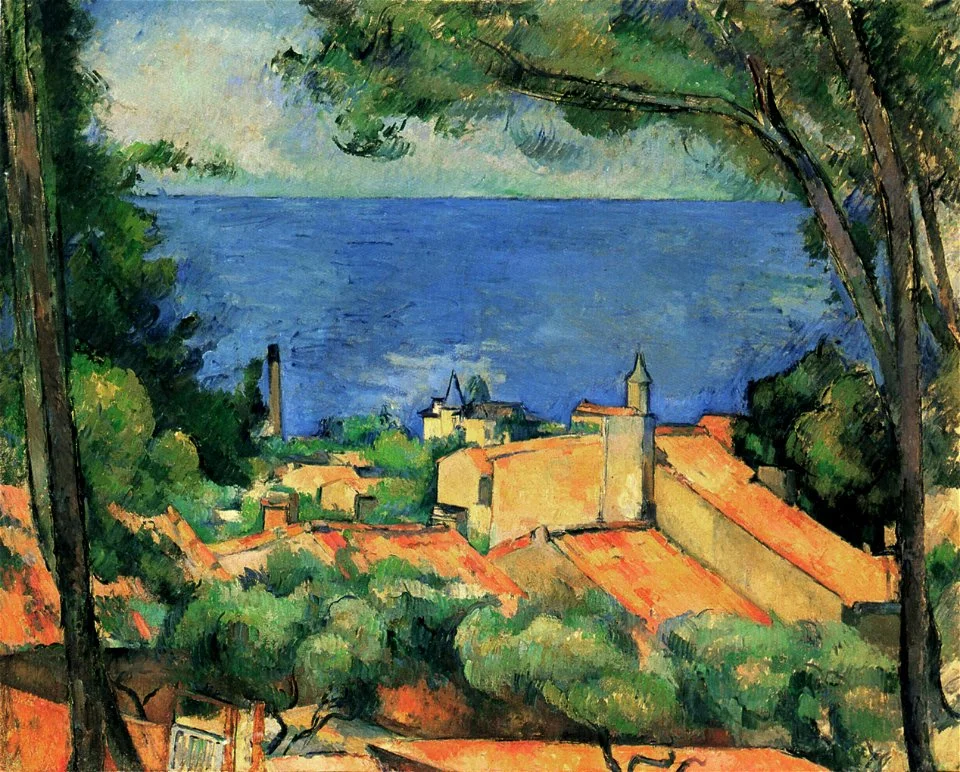
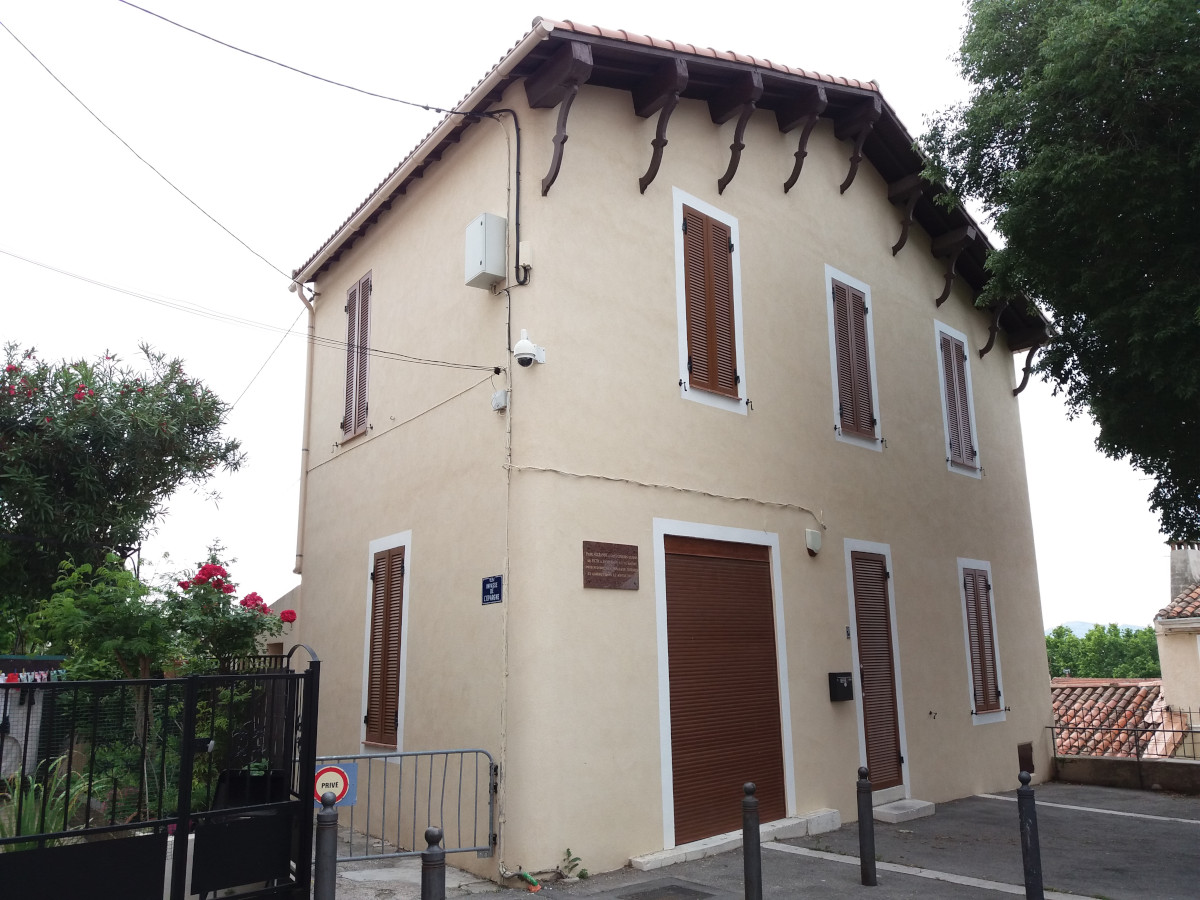
Among the many well-known artists who were attracted by very particular light in Provence and came to the area to paint are Cézanne, Renoir, Monet and Signac. Paul Cézanne, born in nearby Aix-en-Provence in 1839, first visited in 1870 and rented a house in Estaque, then a fishing village, now the 16th arrondissement of Marseille. He returned many times, often inviting other artists including Monet and Renoir to join him. Here, he experimented with colour and form and quite a number of his paintings have the name Estaque in the title: Vue de l’Estaque, La Mer à l’Estaque, Baie de l’Estaque and, the best-known, Maisons de l’Estaque, painted in 1908, which anticipates cubism.
Cézanne wrote: ‘I have rented a little house with a garden in L’Estaque, just above the station and at the foot of the hill where the rocks start behind me with the pines.’ The house is at 2, Place Maleterre (aka 2, Place de l’Église) in l’Estaque. You can’t go inside, but the plaque on the wall says of Cézanne that he produced many of his ‘most famous, most admired’ paintings here.
street art
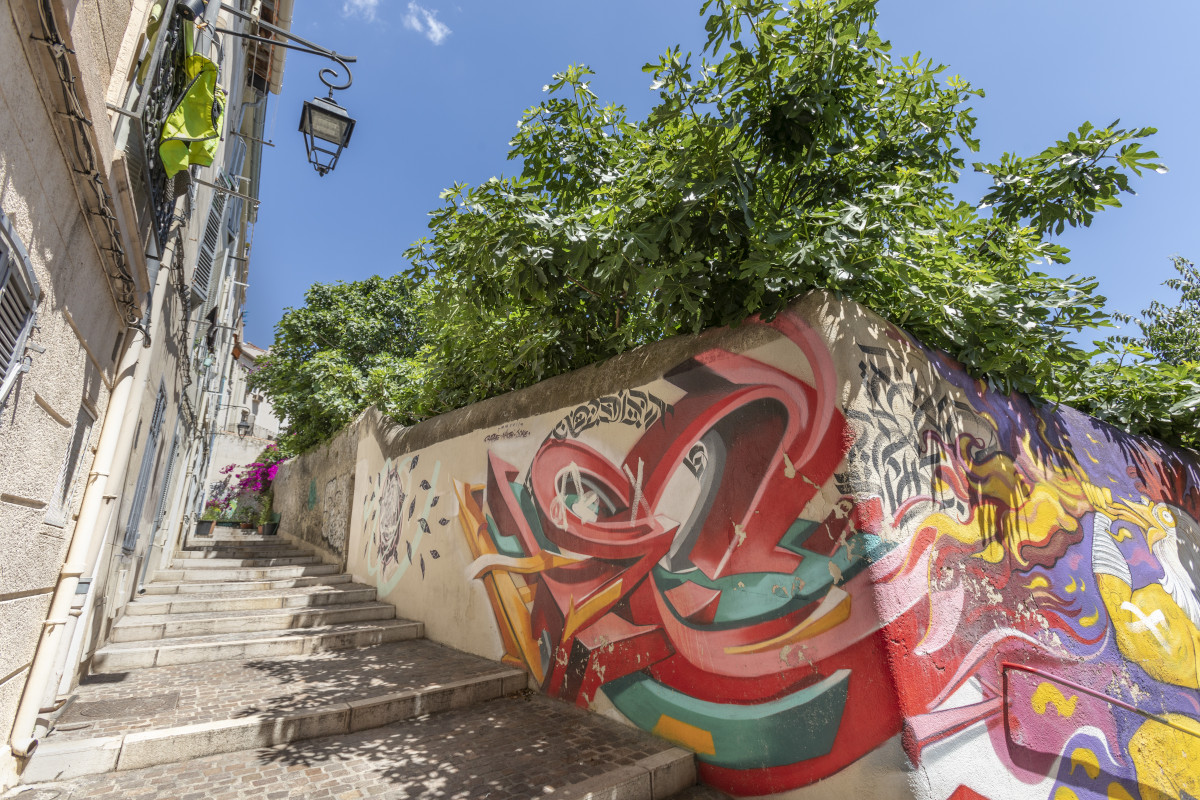
Finally, don’t forget that in Marseille much contemporary art is not in its galleries, but on the walls and houses of the city. Street art is particularly prevalent in two city-centre areas: Le Panier and the Cours St Julien. See Episode 04 for more detail.
Listen to the podcast
links for this post
Musée des Beaux Arts
Regards de Provence
Vieille Charité
Museum of African, Oceanian and Amerindian Arts
Museum of Mediterranean Archaeology
Musée Cantini
Museum of Modern Art
Museum of Decorative Arts
Previous episode La Joliette, the Mucem and the Cosquer Museum
Next episode Coming very soon

